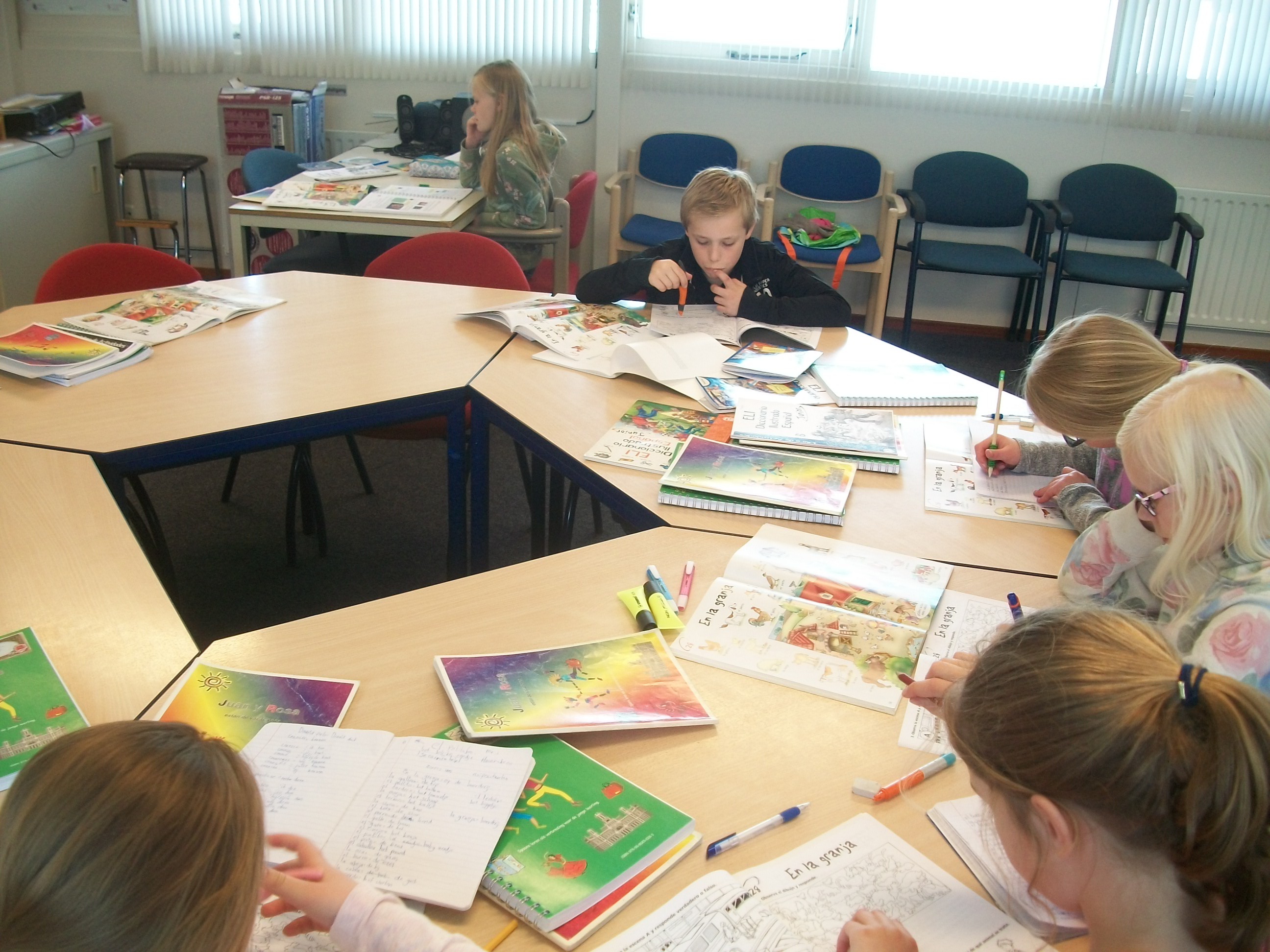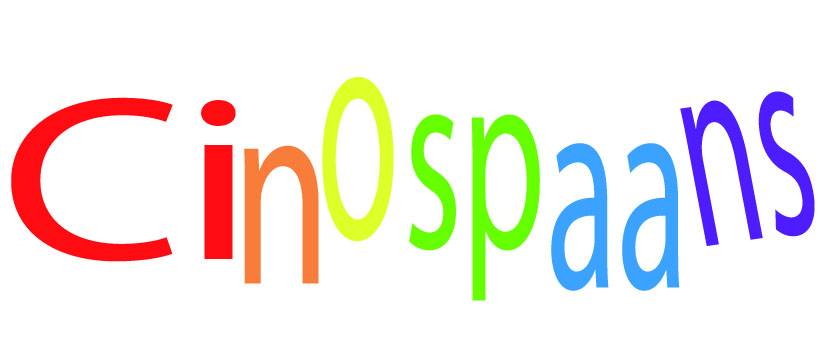FAQs
Please see the list below for a selection of the most frequently asked questions about the Juan y Rosa learning method. Can’t find the answer to your question? Contact us (cinospaans@gmail.com) and we will be happy to help you!
This page provides the answers to the following questions:
1. From what age can pupils work with the Juan y Rosa method?
Answer: Part 0, ‘Soy Don Toro’, is suitable for children from around the age of 6, or younger if they already have a basic level of proficiency in reading and writing (Key Stage 1).
Juan y Rosa Part 1 is suitable for children in Key Stage 2 or as the follow-on to ‘Soy Don Toro’. We advise that pupils in the first half of Key Stage 2 spend two hours a week working on Juan y Rosa Part 1, in which case it will take them approximately two years to complete it. We advise that pupils starting with this method for learning Spanish in the second half of Key Stage 2 spend two to three hours a week on it, in which case Part 1 will take them one year to complete. In other words, if pupils start working with the Juan y Rosa method they can spend four years learning Spanish.
2. Can pupils work independently with the learning method for Spanish?
The teacher/supervisor coaches and motivates each pupil throughout the learning process, helping them to gain insight into the various learning strategies and encouraging them to shoulder responsibility for their own learning process.
3. What is the added value of the Edmodo classroom?
Answer: In the Edmodo classroom (as a free download), pupils can find all of the links to websites they need for learning Spanish with this method. From Edmodo they can download the domino game, the bingo game and other tools for learning the Spanish words. In addition to the pupils themselves, teachers/supervisors and parents, who are interested in monitoring a pupil’s learning progress can set up an account simply by sending an email to Don Toro (dontoro.espanja@gmail.com). They should request the access code for the relevant part of the learning method.
An extra advantage of Edmodo.com for pupils is that they can communicate in Spanish with other students who are also learning Spanish with Juan y Rosa.
4. What is the role of the teacher/supervisor in the classroom in terms of supporting the Juan y Rosa method?
5. Why doesn’t the textbook contain translations of all the words used in the workbook?
6. Are the lyrics also available for the songs in the Prezis and on the USB-stick?
7. Which level will pupils ultimately attain at the end of this method for learning Spanish?
Answer: This learning method has been designed with the Common European Framework of Reference for Languages (CEFR) in mind. The pupils will have attained level A1 of the CEFR by the end of Part 1 of the method. Please note that the programme has been developed with an open vision in terms of the ultimate proficiency level. In other words, gifted pupils are encouraged to be proactive in terms of looking up more words, sending emails to new friends, etc. This also puts level A2 within their reach.
8. How can our primary school best implement this learning method?
Every pupil requires individual attention, but ideally a small group-based setup is preferred over a single-pupil approach. A group of 2 to 4 pupils will offer continued encouragement in the learning process and the children can benefit from one another’s support. Learning a new language can be a good option for groups of primary school pupils with an above-average level of language development. Learning a language together is more stimulating than alone, and other pupils are necessary to hold conversations and act out scenes in drama exercises.
You can start with Part 0 ‘Soy Don Toro’ in the autumn of Key Stage 1, and Part 1 ‘Juan y Rosa están de vacaciones’ is suitable from the start of Key Stage 2.
When implementing this learning method at your school, it is important to bear the following points in mind:
- Each part of the Juan y Rosa method for learning Spanish contains teaching materials for approx. 1.5 to 2 years of learning. You can implement Part 1 at the start of Key Stage 2. After four years of learning Spanish with Juan y Rosa, the pupil’s proficiency will exceed that of level A1 of the CEFR.
- Give pupils the opportunity to learn at their own level and pace. The main role of the teacher/supervisor is to support each pupil in their individual learning process. Therefore, the ability to provide guidance is more important than the teacher’s proficiency in Spanish.
- If you start with Part 0, ‘Soy Don Toro’, in Key Stage 1 it will helps you to get to know your pupils better and for them to learn more about themselves too and about their approach to learning, before moving on to learning the basics of Spanish with Part 1 in Key Stage 2. The ‘Soy Don Toro’ part combines the importance of conversation and discussion of the topics with the fun of learning new words and Spanish songs. Encourage pupils to interact, dance and perform the actions to songs to optimally stimulate their learning process.
- Ensure that pupils have access to a computer – either alone or in pairs – so that they can work on exercises, search for new words and information, watch the presentations (Part 0) and listen to the audio files on the USB-stick (Part 1).
- Based on an average speed of learning, the following guidelines apply in terms of study load for small groups of 2 to 4 pupils:
– Key Stage 1: two 30-minute blocks of group work per week for the discussions + two 15-minute blocks of self-study;
– Key Stage 2 (first half): two 15 minute-blocks of conversation and instruction per week + three 30-minute blocks of self-study;
– Key Stage 2 (second half): two 15 minute-blocks of conversation and instruction per week + three 40-minute blocks of self-study.
For a complete and detailed implementation model of the two parts at your school, view the presentation in Prezi (click here).
9. How can I order extra material that is recommended as part of the learning method?
- Spanish website of Difusión.
You can also register for ‘1 minuto con difusión’. You will then receive regular emails containing ideas and tips for Spanish lessons. Please note: all the information is in Spanish. - the Mary Glasgow website: subscribe to the Spanish-language magazines ¿Qué tal? (for level A1) or Ahora (for level A2).
10. How can I contact the author if I have more questions?
Please fill out this form if you would like to receive first more information.


